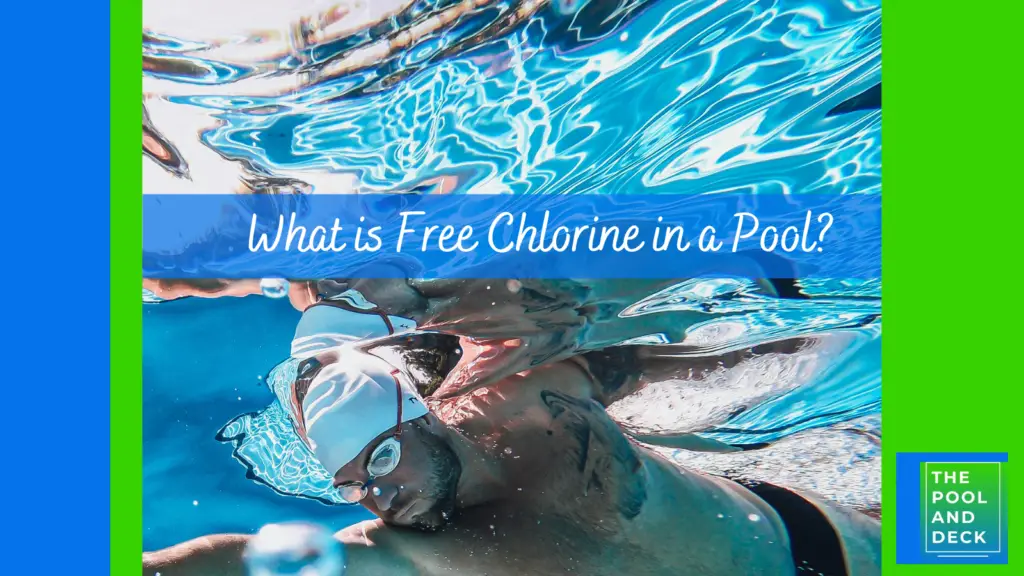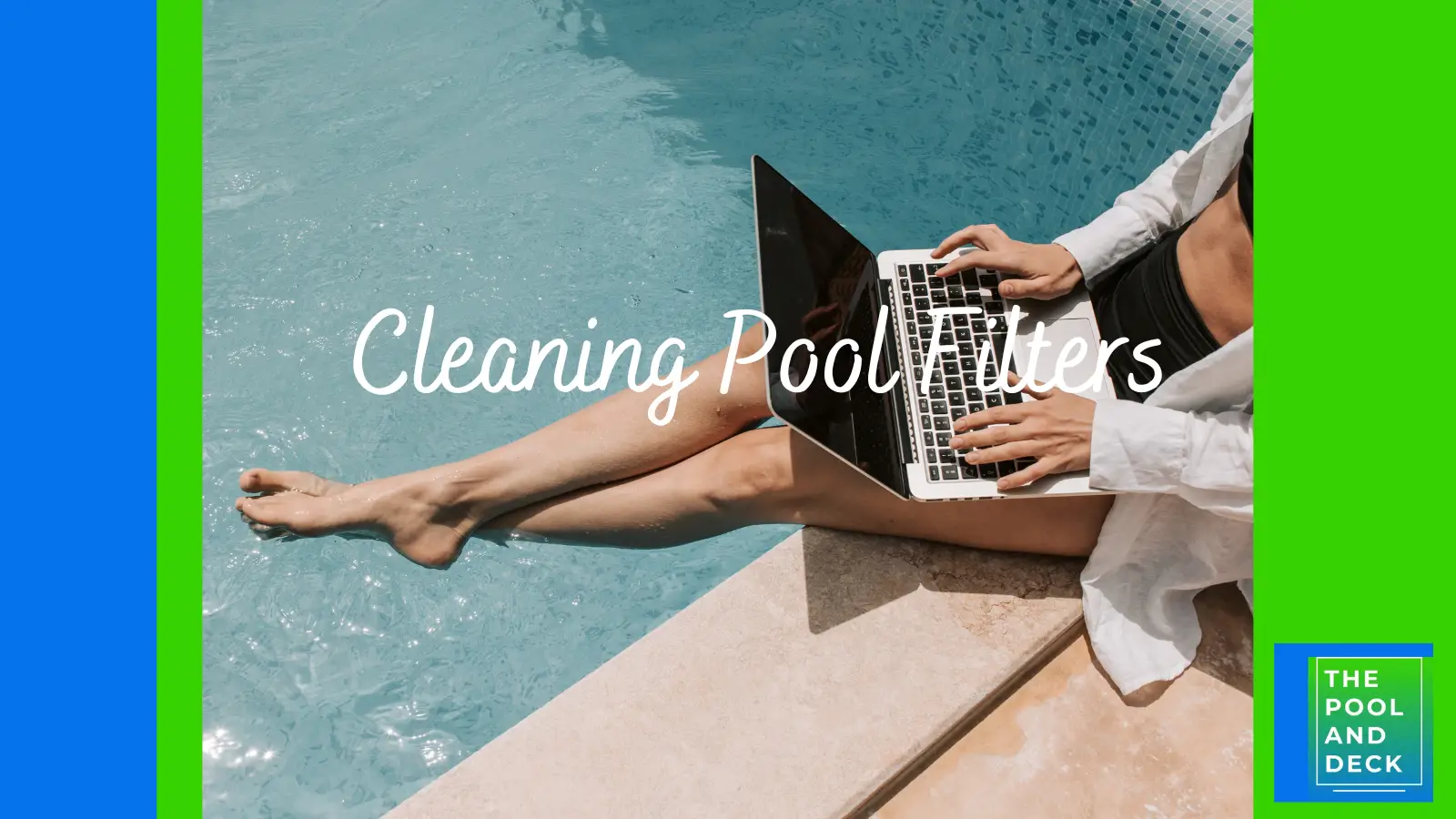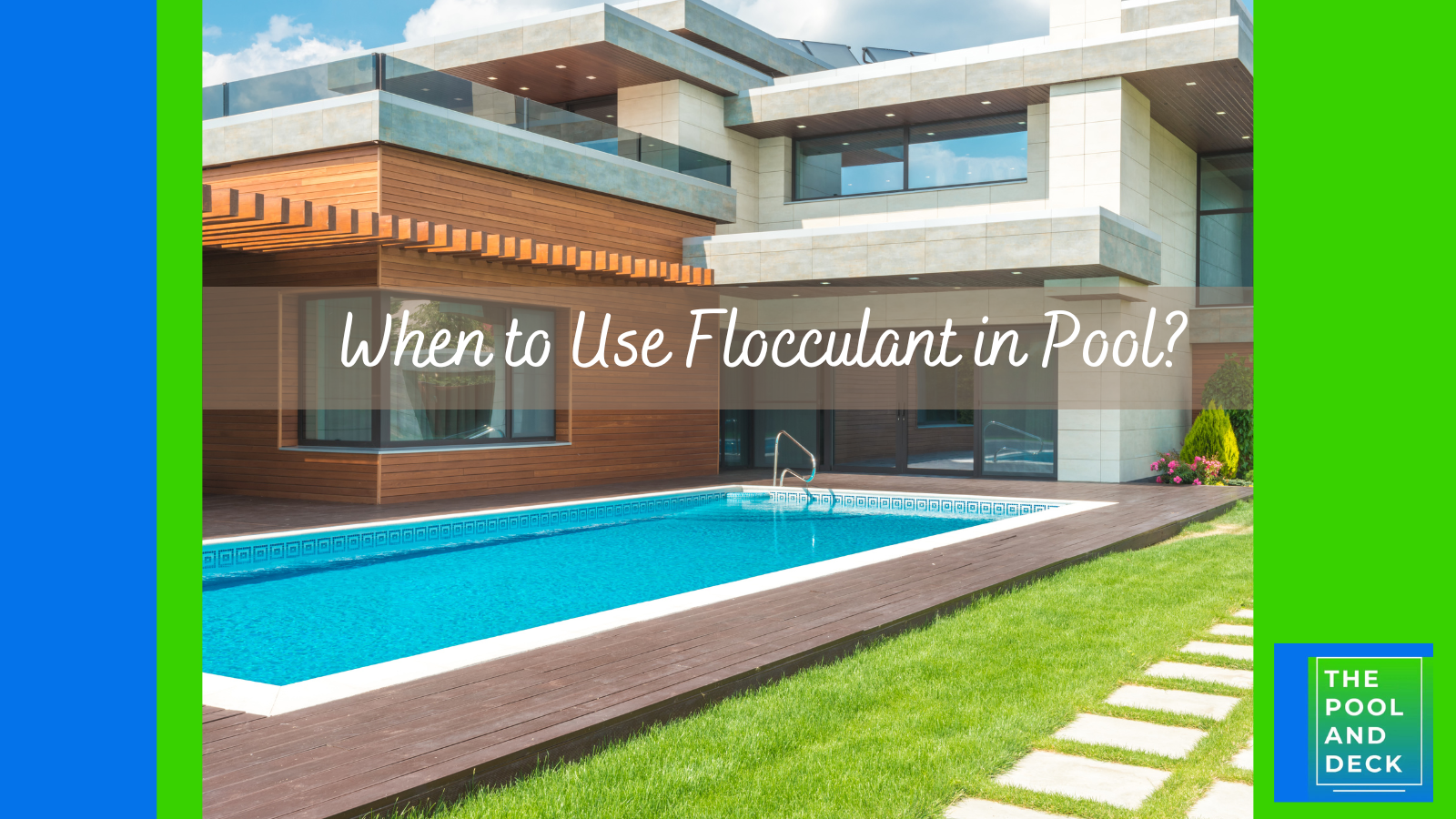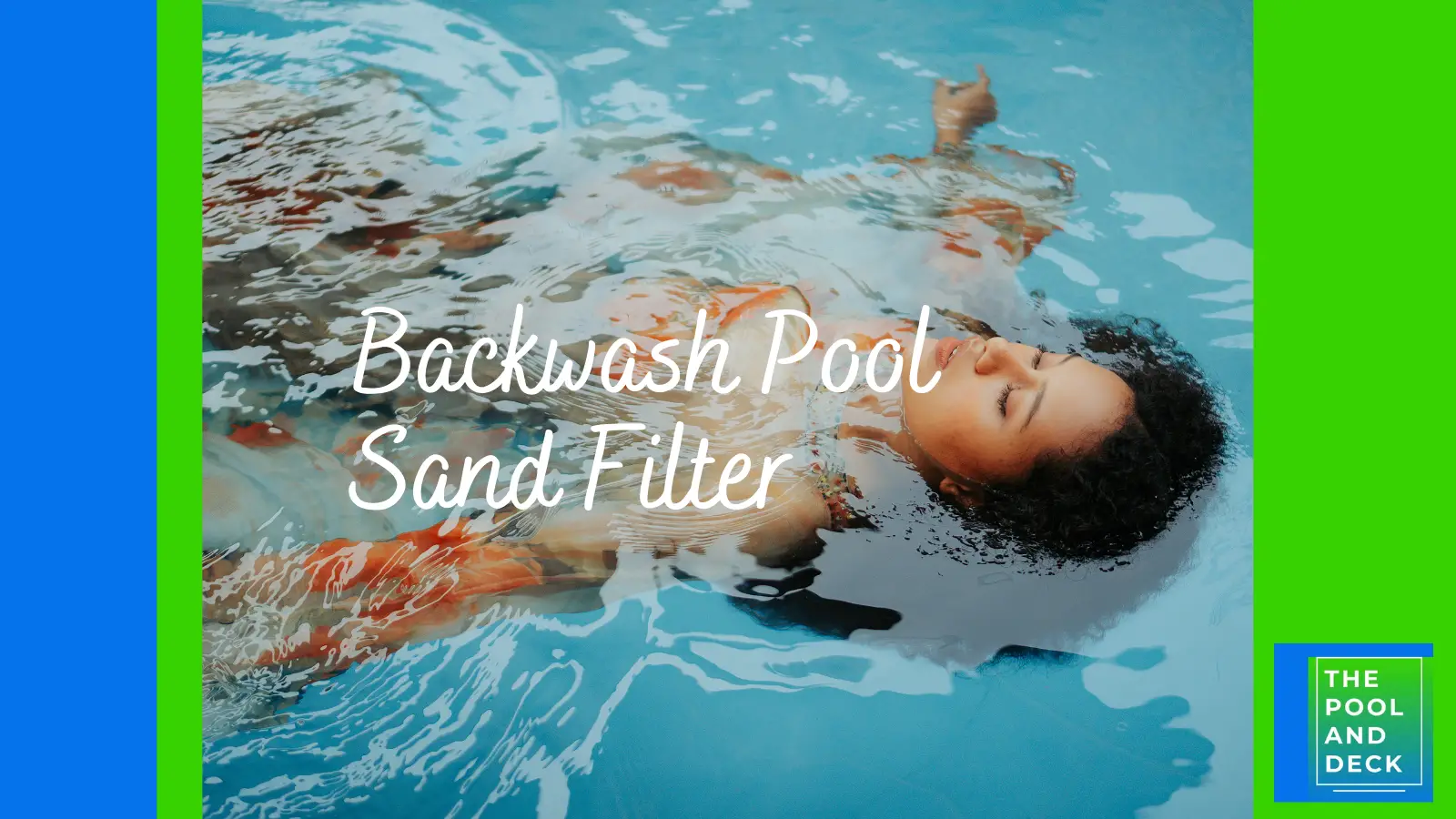What Is Free Chlorine in a Pool? Short & Easy to Understand Guide
thepoolanddeck.com is a participant in the Amazon Services LLC Associates Program, an affiliate advertising program designed to provide a means for sites to earn advertising fees by advertising and linking to Amazon.com . The website is also an affiliate of a few other brands. The affiliate links never increase your purchase price. We do appreciate your support. Thank you very much!

As a new pool owner you need to understand what is Free Chlorine in a pool and how it impacts the safety of swimmers and the water quality in you pool.
Quite often, articles that explain what is Free Chlorine in a pool get very lengthy and complicated. The intent of this article is to present a short & easy to understand guide for new pool owners.
Table of Contents
What Is Free Chlorine in a Pool?
Free chlorine is the amount of chlorine in your pool that is available to sanitize, or clean, the water. It’s the active chlorine that hasn’t yet combined with contaminants. Maintaining proper free chlorine levels is crucial for keeping your pool water safe and clean.
Free chlorine is the active, disinfecting form of chlorine in pool water. It kills bacteria, viruses, and algae, keeping your pool water clean, clear, and safe for swimming.
Free chlorine binds with bacteria and other contaminants to neutralize them. This process is known as sanitization. The chemical name of the sanitization process is “oxidation”. The cell walls of the microorganism are broken down due to the “oxidation” process resulting in their death.
Without enough free chlorine, your pool could become a breeding ground for harmful microorganisms, leading to cloudy water and potential health risks.
How Is Free Chlorine Formed?
Free chlorine is formed in pool water through a chemical reaction. When chlorine is added to water, it reacts to form hypochlorous acid (HOCl) and hydrochloric acid (HCl).
The reaction can be represented as follows:
Cl2 (chlorine) + H2O (water) -> HOCl (hypochlorous acid) + HCl (hydrochloric acid).
Hypochlorous acid is a mild acid which acts as a disinfectant, killing bacteria and other harmful organisms in the pool. However, when present at recommended levels it is safe for swimmers to use the pool.
Free Chlorine vs Total Chlorine
Free chlorine is the chlorine available to sanitize your pool. Total chlorine is the sum of free chlorine and combined chlorine, which is the chlorine that has already reacted with contaminants. The difference between these two gives you the level of combined chlorine.
Combined chlorine, also known as chloramines, is formed when free chlorine reacts with nitrogen-containing compounds, such as urea, sweat, and other organic contaminants introduced by swimmers.
Unlike free chlorine, which actively eliminates bacteria and microorganisms, combined chlorine is less effective in sanitizing the water.
Find out more at What is Combined Chlorine? Beginner’s Quick Guide
Maintaining Free Chlorine and Total Chlorine and minimizing Combined Chlorine (less than 1 ppm) is the key to maintaining a safe and healthy swimming environment in your pool.
Free Chlorine ensures effective sanitization, keeping the water clean and safe. Incorrect levels can lead to cloudy water, algae growth, or even health issues. Combined Chlorine is eliminated as a byproduct of the sanitization process.
What is the Recommended Free Chlorine Level?
The recommended free chlorine level in a pool is 2 – 4 ppm (parts per million).
The Association of Pool and Spa Professionals recommends free chlorine levels be kept between 2.0 and 4.0 ppm. The Center for Disease Control recommends free chlorine stay above 1 ppm in pools and 3 ppm in hot tubs.
Source: Pool Calculator
Get more details on recommended levels of various pool chemistry parameters at Pool Chemistry for Beginners: With 5 Super Helpful Cheat Sheets!
How to Test for Free Chlorine?
You should test your pool’s free chlorine levels at least twice per week. However, during periods of heavy use, after rainstorms, or when water chemistry is unbalanced, more frequent testing may be necessary.
Regular testing ensures that your pool’s free chlorine levels are within the recommended range, keeping your pool clean and safe for swimming.
To test for free chlorine in a pool, you can use test strips, liquid test kits, or digital testers. Test strips are quick and easy, while liquid kits and digital testers offer more accuracy. Regular testing is key to maintaining optimal chlorine levels.
A useful link to Necessary Pool Chemicals: The Best (With Easy Links!)
Test Strips
Using a test strip to check free chlorine levels in your pool is quite straightforward. Here are the steps:
1. With clean, dry hands, dip a strip into your pool water for about 5 seconds.
2. Take it out and wait 10 seconds.
3. The strip will change color. Compare the strip colors against the chart on the pack of strips.
4. You can now adjust the levels of chemicals as indicated by the strips.
Pool testing strips aren’t quite as accurate as liquid test kits, but they are certainly far quicker and more convenient to use.
Liquid Test Kit
Using a liquid test kit to check free chlorine levels in your pool involves the following steps:
1. Fill the test tube with pool water. Make sure to take your sample from water that is 12-18 inches below the surface.
2. Add a few drops of the solution you want to test for.
3. Put the cap on the test tube and gently shake it.
4. After a few minutes, check the results.
Follow the manufacturer’s instructions as the instructions can vary depending on the brand of your test kit.
Digital Test Kit
Using a digital tester to check free chlorine levels in your pool is quite simple. Here are the steps:
1. Insert a test strip into the reader.
2. Dip it into a sample of your pool water.
3. Wait approximately 15 seconds for your results.
4. The digital display is easy to read and lists the numeric results alongside the overall status of your results in “LO,” “OK,” “HI” indications.
Not all brands and models use the same test method, so be sure to use the method recommended in the user’s manual. Digital testers are more accurate than test strips or a liquid test kit, but they are more expensive too!
How to Adjust Free Chlorine Levels in a Pool
Increasing Free Chlorine Levels
Trichlor tablets placed in floaters or in the skimmers, is a common way of adding the regular chlorine dose to the pool water.
In case tests show that the chlorine levels in the pool are lower than recommended, you can increase the dosage.
HTH 42055 Pool Care 3″ Chlorine Tabs Advanced
Sanitizer, clarifier, and algaecide to protect your swimming pool and swimmers with one easy and convenient tab.
Adding Cal Hypo (granular) or liquid chlorine is another way to quickly increase free chlorine levels in your pool.
If you’re using a saltwater chlorine generator, adjust the percentage setting.
Decreasing Free Chlorine Levels
If you have the time the best to decrease free chlorine levels in a pool,
is to let sunlight and aeration naturally reduce the chlorine levels. If you are in a hurry, you can use a chlorine neutralizer like Sodium Thiosulfate.
If filter backwashing or the pool vacuuming is due, perform these tasks. You will naturally lose some pool water. Replenish your pool with fresh water to bring down the free chlorine levels.
Thank you very much for reading the post. I do hope you found it informative and helpful.








